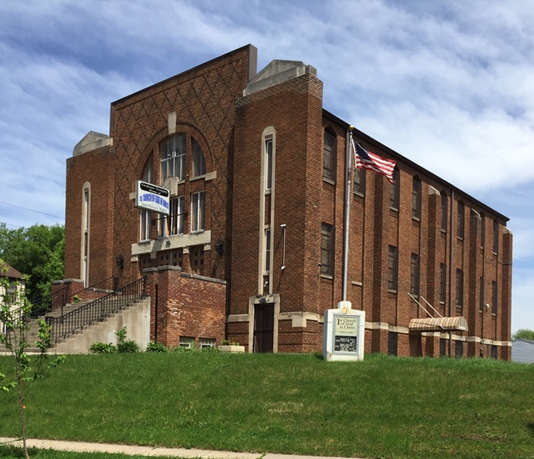
Image: Synagogue erected in 1926 by the Tifereth B’nai Jacob congregation, Purchased in 1957 by the First Church of God in Christ. Approved by the Minnesota State Historical Preservation Office for nomination to the National Register for Historic Places. Image from the Houses of Worship project website.
Online seminar with Marilyn J. Chiat, Ph.D. and Jeanne Halgren Kilde, Ph.D. on 5th March 2024 at 4pm GMT.
This seminar will take place online – in order to register, please use the
link.
If you have any difficulty in registering, please contact niamh.nicghabhann [at] ul.ie.
This seminar is presented as a collaboration between the Centre for the Study of Religion at University of Galway and the Material and Cultural Heritages of Religion in Ireland research network (MCHRI). The seminar chair will be Dr Sophie Cooper, Queen’s University Belfast.
What do the histories of, and the continued research on, various local congregations and houses of worship in Minneapolis-St. Paul teach us about how communities are created, relationships are built, and how inter- and intra- congregational interactions are lived out? In this presentation, Dr. Marilyn J. Chiat and Dr. Jeanne Halgren Kilde will introduce their Twin Cities Houses of Worship Project, which has collected data on over 250 congregations and over 500 sites related to religious and ethnic groups who settled and developed nine neighborhoods along the Mississippi River in St. Paul and Minneapolis between 1849 and 1924. They will also focus on one case study, a building erected by Orthodox Jews and later purchased by Black Pentecostals, exploring the distinctive but overlapping histories of the two congregations and discussing the importance of historical research of this kind in bringing historians, preservationists, community leaders, activists, and others together across lines of religious and ethnic difference in the effort to restore, remember, and revitalize historic houses of worship in our region.
Guest speakers:
Marilyn J. Chiat, Ph.D. received her doctorate in Art History from the University of Minnesota. Her dissertation on ancient synagogue architecture was published by Brown University under the title Handbook of Synagogue Architecture. Her focus is on the role religious architecture plays in communities, providing insight into the history of congregants and the larger cultural context in which they exist. She has published and lectured widely on this topic here and abroad. Among her other publications is America’s Religious Architecture: Sacred Places for Every Community, commissioned by the National Trust for Historic Preservation and published by John Wiley & Sons, The Sacred Traveler: Chicago and Illinois, part of the Sacred Traveler Series published by Paulist Press, and North American Churches from Chapels to Cathedrals, published by Publications International.

Jeanne Halgren Kilde, Ph.D. Director Emerita of the Religious Studies Program at the University of Minnesota. A cultural historian of religion in the United States, Kilde holds a Ph.D. in American Studies from the University of Minnesota. Her primary research focus is on religious space and architecture. Among her publications are the monographs When Church Became Theatre: The Transformation of Evangelical Architecture and Worship (Oxford University Press, 2002); and Sacred Power, Sacred Space: An Introduction to Christian Architecture (Oxford University Press, 2008); and the edited volume, the Handbook of Religious Space and Place (Oxford University Press, 2022). With Marilyn Chiat, she is co-lead researcher on the Houses of Worship in the Twin Cities Project. She is also working on a study of the development of “spirituality” and “spiritual” architecture in the 1950s and 1960s.

